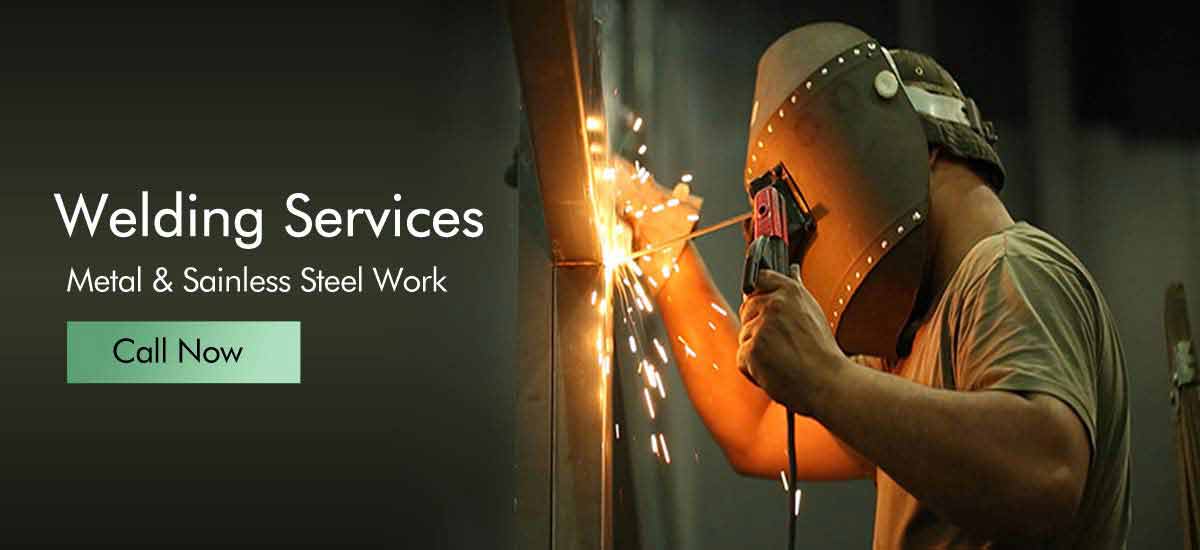Opening the Secret Kinds of Welding Solutions for Your Tasks
In today's landscape of diverse welding services, comprehending the subtleties and applications of different welding methods is critical for effective task implementation. From frequently used approaches to sophisticated innovations, the world of welding uses a spectrum of possibilities to satisfy different project requirements. By unwinding the key types of welding solutions offered, one can browse the complexities of selecting the most ideal method to make certain precision, efficiency, and high quality in welding jobs. As we start this exploration of welding solutions, a deeper understanding into the world of welding waits for, encouraging insights that can elevate the end results of your tasks.
Typical Welding Strategies
Numerous frequently used welding techniques play important roles in various industrial sectors. One of the most commonly utilized approaches is Gas Metal Arc Welding (GMAW), additionally recognized as MIG welding.
An additional popular welding method is Gas Tungsten Arc Welding (GTAW), frequently referred to as TIG welding. TIG welding uses a non-consumable tungsten electrode to produce the weld and calls for a separate filler product. This method is favored for its control, precision, and ability to create top quality welds on thin materials.
Protected Metal Arc Welding (SMAW), or stick welding, is one more important method where a flux-coated electrode is utilized to produce the weld. SMAW is recognized for its simpleness, adaptability, and suitability for outside and on-site welding applications. These common welding techniques are necessary for fabricating structures, machinery, and numerous tools throughout industries.
Advanced Welding Procedures
Advanced welding procedures include sophisticated methods that push the boundaries of conventional welding methodologies in regards to efficiency, precision, and flexibility. One such process is laser beam of light welding, which utilizes a focused beam of light to sign up with metals with very little heat-affected zones, making it excellent for high-precision or delicate tasks. In addition, electron beam welding uses a high-velocity electron beam of light to create deep welds in thick products, using phenomenal toughness and top quality.
Moreover, friction stir welding is a solid-state signing up with process that utilizes a revolving device to produce frictional warmth, bonding materials without thawing them. This technique is specifically helpful for joining light-weight alloys with premium mechanical buildings. An additional cutting-edge technique is ultrasonic welding, where high-frequency ultrasonic vibrations are utilized to create solid-state welds in plastics, metals, and various other materials, offering quick and tidy joining services.
These advanced welding processes deal with a varied series of commercial needs, giving effective, top notch, and specific options for different jobs, from aerospace components to automobile components and beyond.
Specialized Welding Applications

Automated Welding Solutions
In modern-day industrial setups, the implementation of automated welding solutions view website has revolutionized manufacturing processes by improving efficiency and precision. Automated welding systems make use of sophisticated innovations such as robotics, computer numerical control (CNC), and expert system to execute welding tasks with very little human intervention (Welding Inspection Service). These systems provide numerous advantages, including boosted efficiency, boosted weld high quality, and lowered manufacturing costs
One key advantage of automated welding options is their ability to regularly create high-grade welds, bring about improved overall item quality. Furthermore, these systems can run constantly, 24/7, without the requirement for breaks, resulting in greater result degrees and faster job conclusion times. By making use of automated welding remedies, firms can likewise minimize the risks linked with human error, guaranteeing greater precision and repeatability in the welding process.
Moreover, automated welding solutions are versatile and very flexible to various welding applications, from elaborate components to large-scale frameworks. Whether in automobile manufacturing, aerospace markets, or building and construction projects, the integration of automated welding systems provides an affordable side by streamlining operations and providing premium welding outcomes.
Cutting-edge Welding Technologies
The evolution of automated welding options has actually paved the method for the assimilation and development of cutting-edge welding technologies in modern-day industrial applications. One such innovative innovation is laser beam welding, which makes use of an extremely focused beam of light of light to join steel parts with accuracy and effectiveness. This method is especially useful for projects calling for intricate welds on materials with high melting factors or for applications where minimal heat-affected areas are important.
Another cutting-edge welding technology acquiring popularity is rubbing mix welding (FSW), a solid-state joining process that develops high-strength bonds by producing frictional warm in between two pieces of steel. FSW is extensively used in industries such as aerospace and auto for its ability to produce welds with remarkable mechanical residential or commercial properties and enhanced architectural stability.
Additionally, electron light beam welding (EBW) is an advanced technique that uses a beam of high-velocity electrons to create precise, deep welds in metal elements. This technology is preferred for its capacity to weld dissimilar metals and products with differing thicknesses properly. As sectors remain to require higher quality and effectiveness in welding processes, these ingenious innovations are positioned to play a substantial role fit the future of industrial welding applications.

Final Thought
To conclude, understanding the key sorts of welding solutions is essential for effectively completing a range of jobs. From common welding strategies to sophisticated processes, specialized applications, automated solutions, and ingenious modern technologies, each technique uses special benefits and applications. By familiarizing yourself with these various welding alternatives, you can pick the most ideal technique for your certain project needs and attain high-quality outcomes.
In click today's landscape of varied welding services, recognizing the nuances and applications of numerous welding methods is extremely important for successful job execution. By untangling the essential types of welding solutions available, one can navigate the intricacies of selecting the most suitable approach to make certain precision, effectiveness, and top quality in welding jobs. As we begin on this exploration of welding services, a deeper insight right into the globe of welding waits for, encouraging you could check here insights that can elevate the results of your tasks.
